Pennsylvania and Maryland’s Great Allegheny Passage
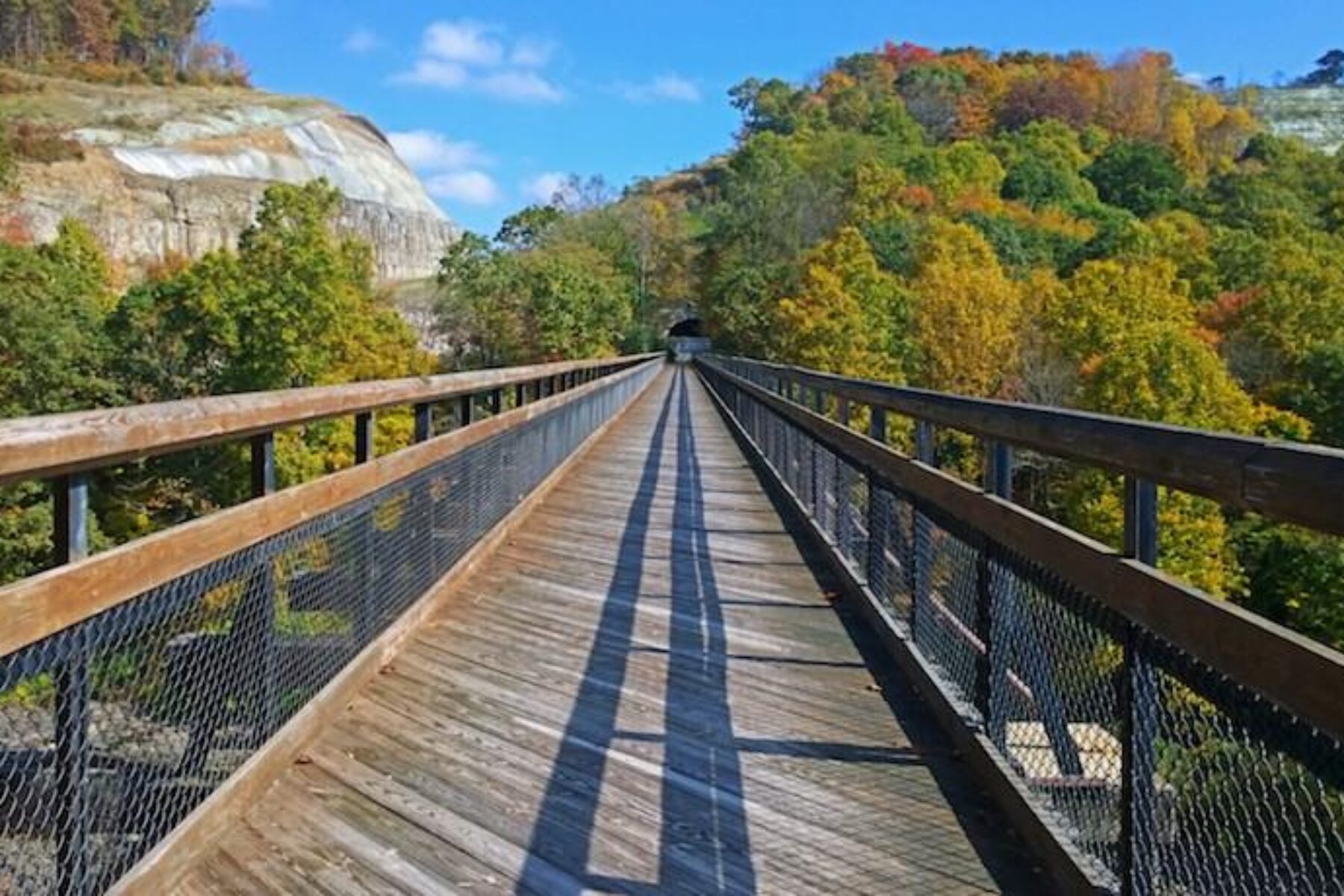
Great Allegheny Passage: July 2007 Trail of the Month
Imagine a continuous rail-trail 150 miles long where annually more than half a million visitors hike, bike, ride horseback, ski or fish. Imagine that trail in the making for more than two decades, growing 20 miles one year, three miles the next, a mere mile the following year, 13.5 the next—and so on. Piecemeal—the work of seven different trail-building organizations in two states.
Now imagine that rail-trail in late 2006 connecting to one of the nation’s premier canal towpaths, the 185-mile Chesapeake & Ohio (C&O), to extend 335 miles from suburban Pittsburgh to Washington, D.C. That’s the Great Allegheny Passage, the country’s longest multi-purpose trail and the site of the 2007 Greenway Sojourn, and also the first inductee to Rails-to-Trails Conservancy’s Rail-Trail Hall of Fame. It’s ready to explore, whether you have a week, a weekend, or just a day.
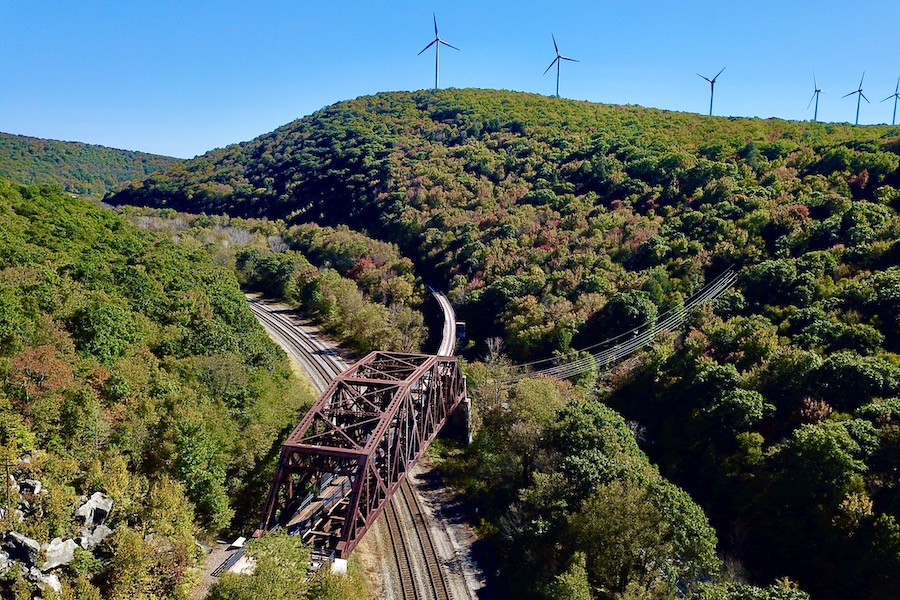
There’s plenty to see and do, and no need to rough it if you don’t want to. If you start on the Passage at Mile 0 in Cumberland, Md., you can first investigate the terminus of the C&O Canal Towpath, visit the National Park Service’s canal museum, or see a bit of historical Cumberland. Then cycle, hike or, if you like, board the Western Maryland Scenic Railroad(open May to December) for the 16 miles to Frostburg. There at the trailhead, learn about life in the horse-drawn age at the Thrasher Carriage Museum.
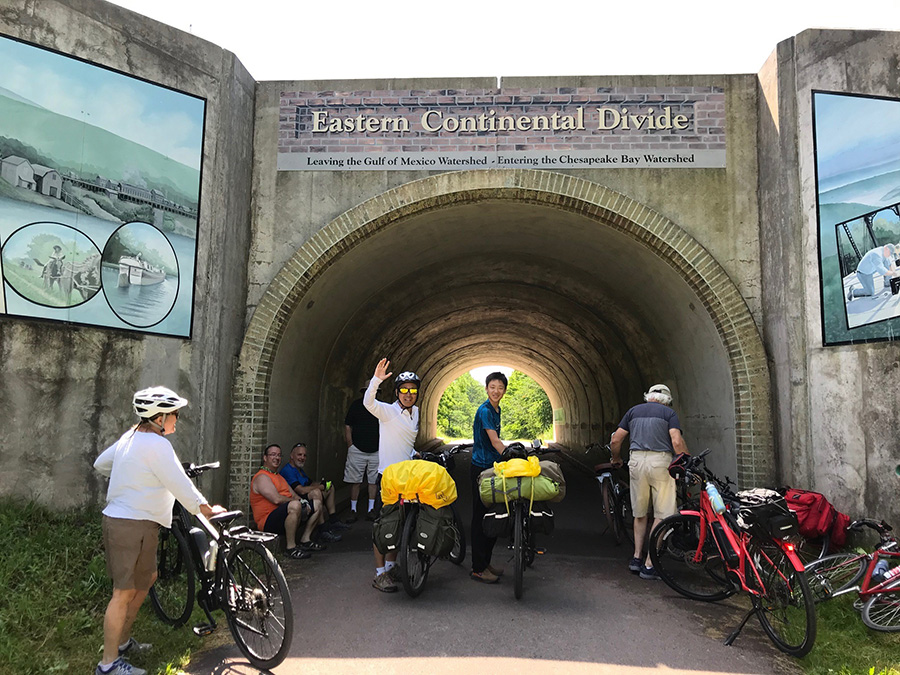
Continuing on the trail toward Meyersdale (Mile 32, home to a railroad museum in the restored depot), you cross the Mason-Dixon Line, the Eastern Continental Divide with sweeping views of the surrounding hills and valley. Then pass through the 3,300-foot, illuminated Big Savage Tunnel, which swallows travelers with a long, cool breath.
On either side of Meyersdale, viaducts lift the trail above the valley. First the Keystone Viaduct, 910-feet long, tip-toes above Flaugherty Creek. Just north of Meyersdale, the spectacular Salisbury Viaduct stretches 1,908 feet across the Casselman River Valley.
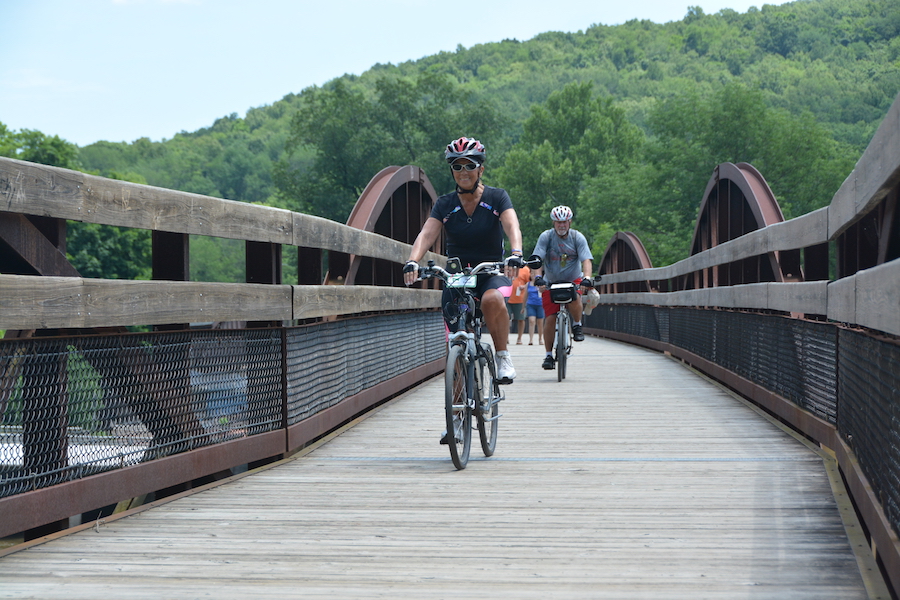
Often tree-canopied, the Passage leads next to Rockwood (Mile 43) with its trailside bike shop and bed-and-breakfast, and across the river, an opera house in a restored mill. Moving on, you soon approach the old Pinkerton Tunnel which has fallen into disrepair and is no longer in use. The Allegheny Trail Alliance plans to restore it, but for now the trail follows the river around the Pinkerton Neck.
At Mile 60, the community of Confluence gets its name from the Youghiogheny (yaw-ki-GAY-nee) and Casselman rivers and Laurel Hill Creek that come together like a turkey-foot below the surrounding mountains. The town of 800 offers B&Bs and restaurants, as well as the Youghiogheny Lake River Recreation Area for boating, fishing and swimming.
Going north from Confluence, the next 11 miles in Ohiopyle State Park are the oldest and most popular section of the Passage. The rail-trail follows the Yough River—beloved by anglers, whitewater rafters and kayakers—past dramatic rocky outcroppings and wooded, boulder-strewn banks. In Ohiopyle (Mile 72) there are lodgings, outfitters, eateries, the park visitors center and, not far off the trail, viewing platforms to see the falls. From here the trail continues on a beautiful bowstring truss bridge and then over the Ohiopyle High Bridge, great for watching rapids and rafters below. The next wooded stretch offers trailside waterfalls and follows the mad-churning Yough to Connellsville (Mile 88).

At this former coal boom-town of 9,000, which has a bike shop and other services for visitors, the Passage leaves the mountains and the river quiets. Other towns that once flourished with the mining, steel and glass industries—Adelaide (Mile 92), Dawson (Mile 94), Layton (Mile 102) and Whitsett (Mile 104)—dot this peaceful stretch.
Westmoreland County’s Cedar Creek Park (Mile 110) offers riverside group camping, while four miles farther along, West Newton’s B&Bs make it a burgeoning hub for trail users. The Passage follows the undulating Yough all the way to the Pittsburgh suburb of McKeesport (Mile 132), where the trail currently ends at McKeespoint Marina.
But not for long. Pittsburgh’s Point State Park, where the Allegheny and Monongahela rivers join to create the Ohio, is the planned end of the Passage. Already several downtown miles of the trail have been built, and the ATA aims to fill this final nine-mile gap in the trail in 2008 as Pittsburgh celebrates its 250th anniversary.
For more information and the trail’s official guidebook, visit the GAP site at www.gaptrail.org.
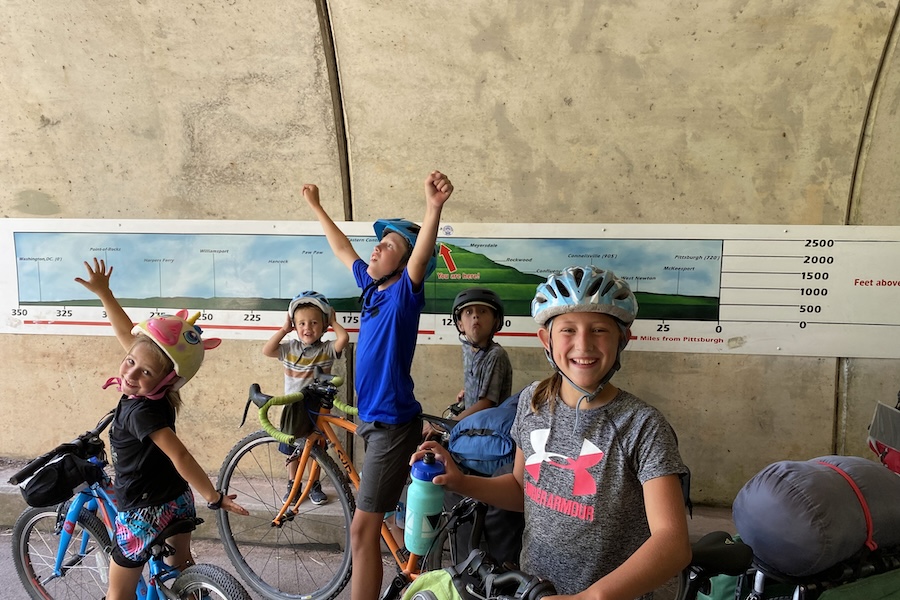
Trail Facts
Name: Great Allegheny Passage
Length: 150 miles
Counties: Allegany, Allegheny, Washington, Westmoreland, Fayette, Somerset
Start point/end point: Cumberland, Md., to McKeesport, Pa.
Surface type: Crushed limestone
Uses: Walking, biking, cross county skiing, inline skating, limited equestrian use (on grassy areas between Rockwood and Garrett, Boston and Connellsville, Frostburg and the Maryland state line), and wheelchair accessible.
Difficulty: Easy to moderate
Parking: For the trailhead in Cumberland, take Exit 43C off I-68 toward downtown and take a quick left on W. Harrison Street. Take a right (heading northwest) on S. Mechanic Street, then turn left on Baltimore Street to reach the trailhead and parking area.
For the trailhead in McKeesport, take the Pennsylvania Turnpike to Exit 57 toward Monroeville/Pittsburgh. Past the toll booth, turn toward Monroeville and Business Rt. 22 West. Immediately get in the left lane, then turn left after one block onto Rt. 48. Continue on 48 for several miles, then head right on Rt. 148 (also Walnut Street in McKeesport). Turn left on Sixth Avenue to reach the parking garage, or continue on to intersection of Fifth and Water Streets for a parking lot. Overnight parking is available in the Sixth Avenue garage with a dashboard permit ($4.50).
Nearby Attractions: Museums and spectacular scenery aren’t the only gifts to visitors along the Passage. Especially during the summer, the communities you’ll pass through offer a great taste of local festivities and family-friendly culture. In Rockwood, Pa., visit the old restored opera house for dinner theater or a variety of musical shows. Also check out the calendar of events in Confluence, Pa., which advertises free concerts, outdoor fairs and antique shows from Meyersdale to Somerset. Whether Cumberland is your starting point or final destination, the Western Maryland Scenic Railroad offers perfect train excursions for adventurous spirits, including “Murder Mystery” rides available from June to December. Or if you’re feeling ambitious in Cumberland, feel free to explore the C&O Canal Towpath 185 miles all the way into Washington, D.C.

Donate
Everyone deserves access to safe ways to walk, bike, and be active outdoors.